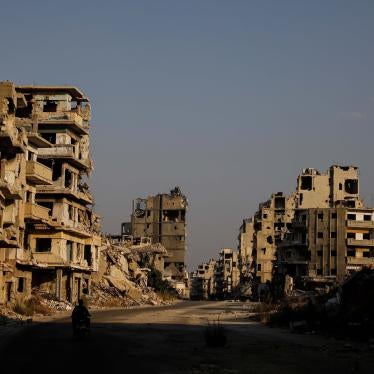Just as the Berlin Wall was the iconic symbol of the Cold War era, so the emblematic symbol of President Donald Trump’s administration, if he has his way, could well be the Mexican wall. It represents a simplistic, concrete solution to a complex human problem, but also, like the Berlin Wall, a fitting symbol for the larger Trump doctrine.
Trump’s wall concept goes beyond the US-Mexico border. He speaks favorably of Israel’s separation wall and Hungary’s border fence.
Although he has yet to comment on the wall Turkey is constructing on its border with Syria, Trump has said, “I think Europe has made a tremendous mistake by allowing in these millions of people.”
Providing humanitarian support to sustain Syrian refugees in their countries of first arrival like Turkey, Jordan, and Lebanon is not part of his solution to the Syrian refugee crisis. He would contain them in their own country, denying them the chance to seek asylum abroad. And what of the people trapped there? He says he will create “a big beautiful safe zone” for them:
So we're going to keep our country safe… And what I want to do is build safe zones in Syria and other places so they can stay there and live safely until their cities and their country… We're going to have the Gulf States pay for those safe zones. They have nothing but money. And we're going to do it that way, instead of taking massive numbers - tens of thousands of people - into our country, and we don’t know anything about those people.
Trump posits a choice of either “taking massive numbers…into our country” or having them “stay there and live safely.” This ignores the institution of asylum, the international refugee regime that supports millions of refugees in countries of first arrival like Lebanon, Kenya, and Pakistan where 86 percent of the world’s refugees live.
The global asylum system succeeds only to the extent that the more distant and wealthier countries like Canada, Norway, and Australia are willing to contribute financially and through refugee resettlement to convince overwhelmed front-line countries not to push refugees back into the conflagrations they’ve fled. Trump seems willing to dispense with that entire system by preventing the displaced from leaving their countries in the first place.
Safe areas have been tried in the past, and the track record is not good. I’ve seen this close up. I was just outside Srebrenica when that United Nations-established and protected safe area fell to Bosnian Serb forces in July 1995 and more than 7,000 men and boys were massacred. The survivors I met were not only traumatized from witnessing family and friends being killed, but by the betrayal of the international community.
A father of three whom I interviewed at that time told me, “I thought we were safe with UNPROFOR,” [the UN peacekeepers]. I thought when I gave them my gun, I would never need it again. We were betrayed. In the last 10 days, the Chetniks [a derogatory term for Serb fighters] were burning our villages, and UNPROFOR did nothing. Even they were frightened.”
One wonders whether Trump has any idea what a “big beautiful safe zone” inside Syria would entail. He presents the idea as one that essentially involves a real estate transaction—buying up “a big swatch of land, which believe me, you can get for the right price,” and which, he says, the Gulf States will pay for in any case. He never addresses how he would protect the people confined to that zone.
It’s unlikely that the various parties to the conflict in Syria would agree to a safe zone. So would the US seek UN Security Council authorization to establish a safe area in Syria without the consent of the Syrian government? Would Trump be willing to deploy US boots on the ground with or without other international forces to protect civilians inside Syria for what likely would be a protracted period? Would the US provide police to maintain law and order within the safe area? Would the US commit to a humanitarian operation to sustain the large civilian populations? How many deaths of US soldiers would he tolerate for the purpose of protecting Syrian civilians?
Trump has thus far shown little interest in humanitarian problems. He has already dismissed an agreement to take refugees stranded by Australia as a “dumb deal” because it would not advance US interests. So, how would safe areas be a “smart deal” in Trump’s transactional calculations? The object would have to be containment, not protection. But without a true and robust commitment to save lives, Trump’s idea for a safe area in Syria looks more like a death trap.










